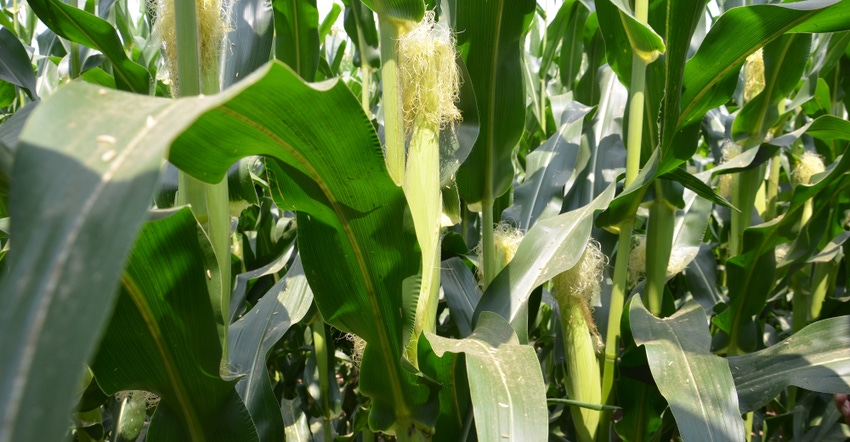
Some people like it hot, but many people prefer staying cool at night. That’s the inspiration behind Serta mattress commercials, promising you will sleep “arctic cool” on their mattresses. Maybe the company should develop a way to keep corn cool at night. Farmers wanting more yield would love to keep cornfields cooler at night, especially in July and August.
“Most corn producers are aware that high nighttime temperatures can hurt yield,” says Mark Jeschke, agronomy manager with Pioneer. “Research has shown that above-average night temperatures during the reproductive stage can reduce corn yield through both reduced total kernel number per ear and reduced kernel weight.”
The first scientific evidence that high nighttime temperatures hurt yield came in 1971 from researchers at the University of Illinois. They discovered that if nighttime temperatures were 85 degrees F from silking through black layer, yields dropped 40% compared to nighttime temperatures of 62 degrees F. Yields for natural air at 65 degrees F, cooled air at 62 degrees and heated air at 85 degrees were 168, 162 and 100 bushels per acre, respectively.
Tale of 2 seasons
Jeschke, Nanticha Lutt and Stephen Strachan looked at yields from a pair of back-to-back seasons in the Corn Belt: 2009 and 2010. In 2009, many farmers in the Midwest produced record corn yields. One year later, despite adequate rainfall, corn yields were much lower.
What changed? Average minimum night temperatures in the Corn Belt during July and August in 2009 were 5 to 8 degrees lower than the average night temperatures in 2010 during the same period. At Des Moines, Iowa, for example, average minimum night temperatures were running more than 5 degrees below the 30-year average when 50% of the corn in that region was silked in 2009 in late July.
In 2010, 50% of the corn was silked just after July 15, and night temperatures were running 3 to 4 degrees above normal, at 70 degrees.
Why warm nights matter
Even though this phenomenon was first documented over 50 years ago, reasons for it aren’t totally understood. For many years, higher rates of respiration and a bigger use of energy at night at higher temperatures was cited as the cause. However, Jeschke says research dating to 1999 indicates that higher respiration probably doesn’t have a large impact on yield. Instead, newer research after the 2010 growing season carried out at Iowa State University points toward accelerated phenological development as the primary cause.
In simpler terms, that means higher night temperatures over time reduce how long it takes plants to reach physiological maturity. The ISU research shows this phenomenon can significantly reduce corn yields, Jeschke says.
Why does speeding up maturity reduce yield potential? If there’s less time between silking and maturity, there is less time for photosynthesis during grain fill. As a result, that means less energy is converted into corn grain, Jeschke says.
Computer modeling by ISU researchers showed that lower night temperatures in 2010 could have extended the month-long period following silking by a week. That’s a significant amount of lost time for grain fill. They concluded that higher-than-average nighttime temps both shortened grain fill and reduced yield.
About the Author(s)
You May Also Like




